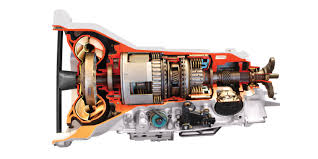The Importance of Transmission in Automotive Engineering
Transmission is a crucial component in the field of automotive engineering. It plays a vital role in transferring power from the engine to the wheels, allowing vehicles to move efficiently and smoothly.
There are two main types of transmissions commonly used in vehicles: manual and automatic. Manual transmissions require the driver to manually shift gears using a clutch pedal and gear stick, providing more control over the vehicle’s speed and performance. On the other hand, automatic transmissions shift gears automatically, making driving easier and more convenient for many motorists.
Modern advancements in transmission technology have led to the development of continuously variable transmissions (CVTs) and dual-clutch transmissions (DCTs). CVTs offer seamless gear shifting without distinct gear steps, while DCTs combine the efficiency of manual transmissions with the convenience of automatic ones.
Efficient transmission systems not only improve fuel economy but also enhance driving dynamics and overall vehicle performance. Engineers continually strive to innovate and improve transmission designs to meet the demands of today’s drivers for smoother rides, better acceleration, and reduced emissions.
In conclusion, transmission is a critical element in automotive engineering that significantly impacts a vehicle’s performance, efficiency, and driving experience. As technology advances, we can expect further developments in transmission systems that will continue to shape the future of transportation.
Understanding Transmission: Components, Driving, General Meaning, and Communication
- What is in a transmission?
- What is transmission in driving?
- What do you mean by transmission?
- What is transmission in Communication?
What is in a transmission?
In a transmission, there are several key components that work together to transfer power from the engine to the wheels of a vehicle. These components include gears, shafts, clutches, and a torque converter (in automatic transmissions). Gears are responsible for changing the speed ratio between the engine and the wheels, allowing the vehicle to accelerate or maintain speed efficiently. Shafts connect the gears and transmit power through the transmission system. Clutches engage and disengage gears to enable smooth gear changes. The torque converter in automatic transmissions uses fluid pressure to transfer power from the engine to the transmission. Overall, each part within a transmission plays a crucial role in ensuring optimal performance and functionality of a vehicle’s drivetrain system.
What is transmission in driving?
Transmission in driving refers to the mechanism that transfers power from the engine to the wheels of a vehicle, enabling it to move forward or backward. In simple terms, transmission allows drivers to control the speed and direction of their vehicle by shifting gears. Whether it’s a manual transmission where the driver manually selects gears using a clutch and gear stick or an automatic transmission that shifts gears automatically, the primary function remains the same – to ensure that the engine’s power is effectively transferred to the wheels for smooth and efficient driving. Understanding how transmission works is essential for mastering driving skills and optimising vehicle performance on the road.
What do you mean by transmission?
The term “transmission” in automotive engineering refers to the mechanism responsible for transferring power from the engine to the wheels of a vehicle. Essentially, the transmission plays a crucial role in enabling the vehicle to move by controlling the speed and direction of rotation of the wheels. In simpler terms, it is the component that allows a driver to shift gears and regulate how much power is delivered to the wheels, influencing factors such as acceleration, speed, and fuel efficiency. Understanding how a transmission works is fundamental in comprehending how a vehicle operates and performs on the road.
What is transmission in Communication?
In the realm of communication, transmission refers to the process of sending data or information from one point to another through a medium such as cables, airwaves, or optical fibres. It involves encoding the message into signals that can be efficiently transmitted and decoded at the receiving end. Transmission in communication plays a crucial role in ensuring the successful exchange of information across various devices and networks, enabling seamless connectivity and effective communication between individuals, organisations, and systems. Understanding how transmission works is essential for maintaining clear and reliable communication channels in today’s interconnected world.
Tags: automatic transmissions, automotive engineering, clutch pedal, cvts, driving dynamics, dual-clutch transmissions dcts, efficiency, engine, fuel economy, gear stick, gears, manual transmissions, power, transmission, vehicle performance, vehicles, wheels
